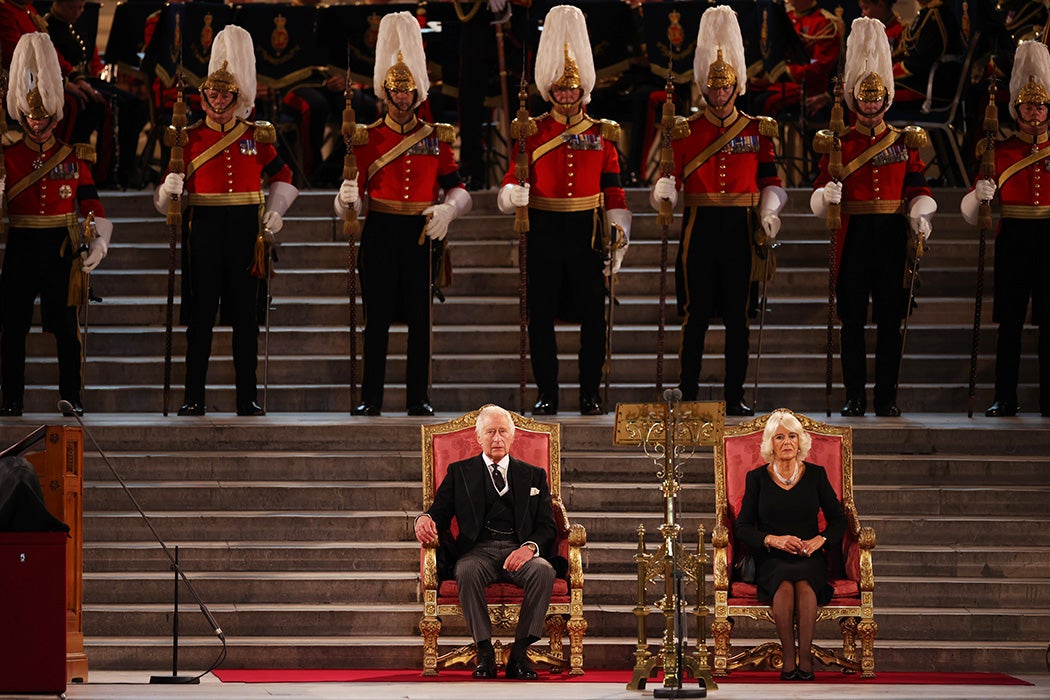The new King of the United Kingdom, the Crown Dependencies (the Bailiwicks of Jersey and Guernsey; the Isle of Man), fourteen British Overseas Territories, and fourteen Commonwealth Realm countries (the largest being Canada and Australia) has been proclaimed as Charles III.
How, you might ask, did he get the job?
It’s mostly the primogeniture: as first-born son of the previous monarch, Elizabeth II, he was next in line to the throne from birth. And now, at 73, after the longest heir-apparent-ship in British history, he’s the oldest person to ever assume the throne.
But it’s not all accident of birth and line of descent. The United Kingdom is a constitutional monarchy, in which a hereditary sovereign rules as head of state within a constitutional system. Sovereign power is mostly symbolic today, but the king or queen has a “right to be consulted, a right to encourage, and the right to warn” government, in the formulation of Walter Bagehot (paraphrased by legal scholar Nail Parpworth), one of the preeminent commentators on Britain’s “unwritten constitution.”
It wasn’t always so, of course: British history is witness to a long struggle to curtail the power of monarchs. Major laws in 1689, 1701, 1931, and less than a decade ago set the parameters for who can succeed to the position of sovereign—based on descent, sex, and religion—and how they may reign.
Writing about the Succession to the Crown Act of 2013, a rare modern Parliamentary foray into monarchical reform during the reign of Elizabeth II, Parpworth writes, “The Act can be described as a modernising measure, even if the reforms which it will make are modest both in number and scale, and long overdue.”
There were three notable changes to the rules:
Male-preference primogeniture was ended. Primogeniture is still the name of the game, but it’s now gender-neutral, meaning a younger son can not displace an older daughter as heir. (Then as now, there’s no question of ability or suitability in these matters.)
How male-preference worked can be illustrated by the case of Elizabeth II’s own children. As the Queen’s oldest child was male, there was no question he would be her heir. The next oldest child, daughter Anne, however, was only next in line until her younger brother was born. Then she was bumped back again when a third son was delivered. The children of her male siblings took precedence over her as well. Before her brothers reproduced, Anne was fourth in line to the throne; now she’s sixteenth. All this changes for family members born in the 2010s and beyond.
Another big change was the ending of the prohibition on heirs-apparent marrying Roman Catholics. The prohibition dates to the Bill of Rights of 1689, whose blunt wording seems to have little place in the modern world: “It is inconsistent with the safety and welfaire of this protestant kingdom to be governed by a popish prince or by any King or Queene marrying a papist.”
While marrying a Catholic is now allowed, a contemporary “King or Queene” must still be in communion with the Church of England, the established, or state-sanctioned church. Parpworth writes that it was a “deliberate omission” to not do anything about this aspect of succession, noting that if England became a republic, say, a prohibition on a Roman Catholic from holding high office would probably be considered a violation of human rights.
Weekly Newsletter
The third reform reduced the reach of the sovereign’s ability to grant consent to royal marriages. The new rules say the requirement of a sovereign’s consent only applies to those sixth or closer in line to the throne, where it used to cover practically everybody who won the royal blood lottery.
The new law came into force in 2015, after approval by the Commonwealth countries who share the sovereign as head of state. All these places, writes Parpworth, needed to be on board for the changes. “If a Realm had decided not to dispense with male preference primogeniture, the heir to its throne may at some point in the future have been a different person to the heir to the UK throne.”
And what a royal kettle of fish that would be.
Support JSTOR Daily! Join our new membership program on Patreon today.







